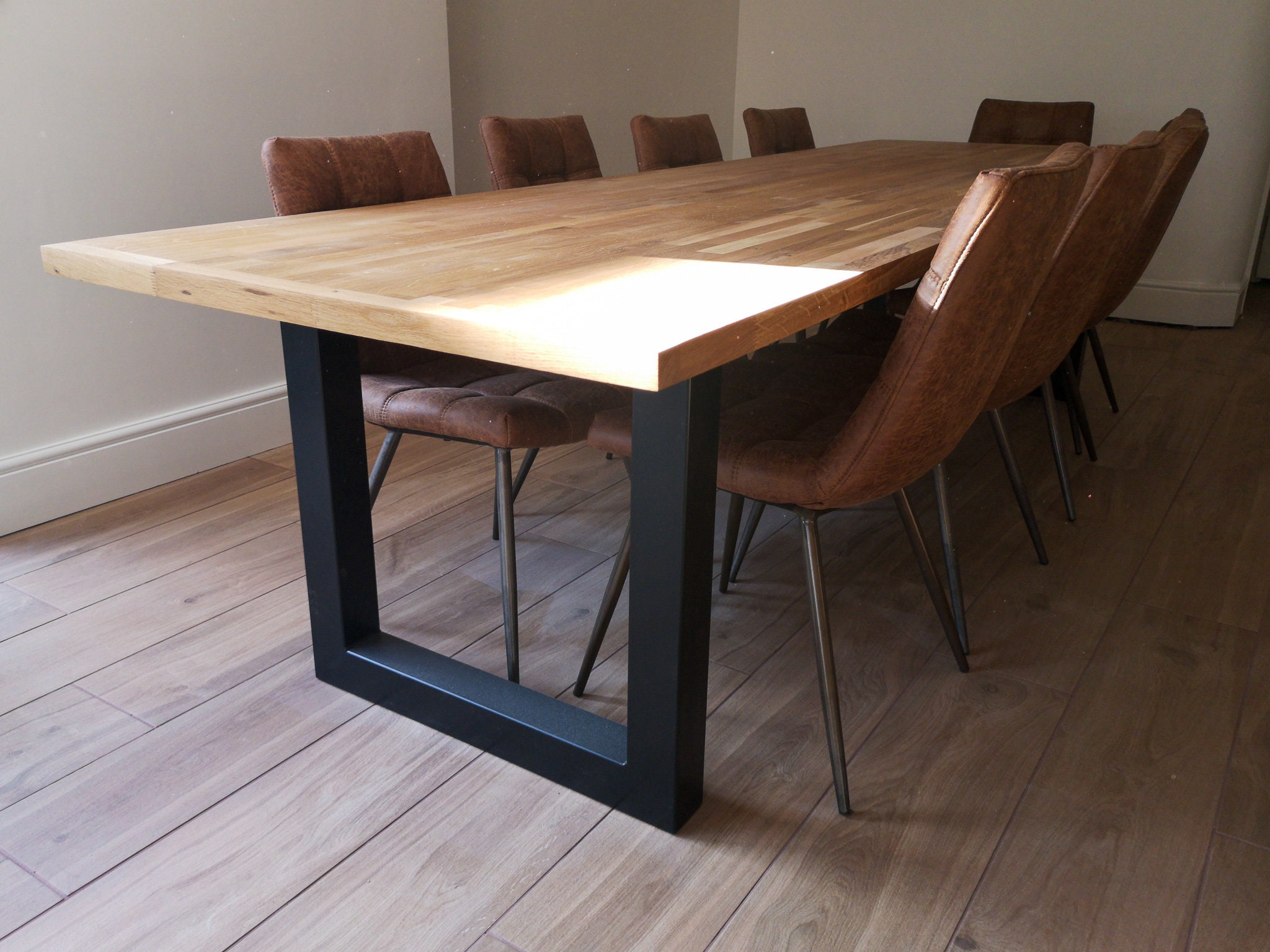The Ultimate Guide to Picking Durable Dining Room Table Legs
The Ultimate Guide to Picking Durable Dining Room Table Legs
Blog Article
An In-depth Consider Eating Table Leg Styles: Finding the Perfect Suit
Selecting the right dining table leg design is essential for both visual charm and practical capability. For those with larger tables, trestle legs make sure tough assistance, whereas barrette legs introduce a mid-century modern-day vibe with their minimalist style. The x-shaped legs mix contemporary style with improved stability.
Conventional Four Legs
Amongst the various types of dining table leg styles, the standard four-leg style stays a timeless selection for lots of families. Four legs offer balanced assistance, guaranteeing the table continues to be steady and qualified of bearing considerable weight (dining room table legs).
From an aesthetic viewpoint, the conventional four-leg design can be quickly adapted to numerous indoor designs. Whether crafted from wood, steel, or a combination of products, these legs can be delicately sculpted, sleek and minimalistic, or anything in between. Their versatility enables them to enhance both rustic and modern settings seamlessly.
Furthermore, the simple structure of the four-leg style promotes convenience of movement and positioning within an area. Unlike more facility bases, this design minimizes obstructions, providing ample legroom for diners. In recap, the conventional four-leg table leg style weds enduring elegance with useful capability, making it a sharp selection for those looking for both form and feature in their eating furniture.
Pedestal Base
Usually commemorated for its sophisticated and space-efficient design, the stand base is a notable choice to the standard four-leg setup in eating table leg styles. Without edge legs, diners are managed better freedom of motion, making it an ideal selection for round and oblong tables that promote even more intimate and inclusive events.
The central column itself uses a canvas for complex styles and imaginative expressions, including an element of aesthetic rate of interest beneath the table. In summary, the stand base combines performance with style, making it a refined and useful alternative for varied dining atmospheres.
Trestle Legs
Trestle legs give a durable and ageless foundation for dining tables, defined by their horizontal cross-bracing and strong assistance light beams. Originating from middle ages times, this layout has actually developed yet retained its crucial structure, making it a perennial fave in both traditional and modern setups. The central trestle light Get the facts beam, usually supported by 2 or even more upright posts, supplies exceptional security, enabling bigger table lengths without the need for additional legs.
A considerable benefit of trestle leg tables is the ample legroom they provide. Unlike tables with four edge legs, the lack of obstructions at the table's edges provides unimpeded room for chairs and diners, boosting comfort and access. This makes trestle tables ideal for accommodating larger gatherings, whether in a dining room or a reception hall.
The visual flexibility of trestle legs is significant. Readily available in a selection of products such as wood, metal, and composite, they can be finished to complement a vast array of interior styles. From rustic farmhouse to streamlined modern designs, trestle legs can be customized to suit individual preferences. Their long-lasting appeal and practical advantages make trestle legs an engaging option for those seeking both style and functionality in their table.
Barrette Legs

The charm of hairpin legs depends on their simpleness and convenience - dining room table legs. Available in a variety of products, including steel and brass, they can be ended up in various colors to enhance different indoor designs. Whether coupled with a rustic wood table top this link or a contemporary glass surface, barrette legs effortlessly mix functionality with a touch of vintage appeal
Longevity is an additional remarkable attribute of barrette legs. Regardless of their fragile look, these legs are engineered to bear considerable weight, guaranteeing the table remains stable and safe and secure. In addition, they are reasonably easy to install, making them a prominent option for do it yourself fanatics and professional furnishings makers alike.
X-Shaped Legs

Built from products such as steel, timber, or a combination of both, X-shaped legs can be tailored to match numerous design choices. Steel legs frequently provide a smooth and commercial feel, suitable for loft-style homes and modern-day dining rooms.
Additionally, the design behind X-shaped legs guarantees even weight distribution, decreasing the risk of tottering and enhancing durability. This makes them especially fit for bigger eating tables that call for additional assistance. Basically, X-shaped legs blend practical design with modern aesthetic appeals, making them a classic selection for varied eating settings.
Final Thought
A thorough understanding of eating table leg designs reveals the unique characteristics and advantages of each style. Trestle legs make sure durable assistance for larger tables, and hairpin legs introduce a mid-century modern-day aesthetic.
Report this page